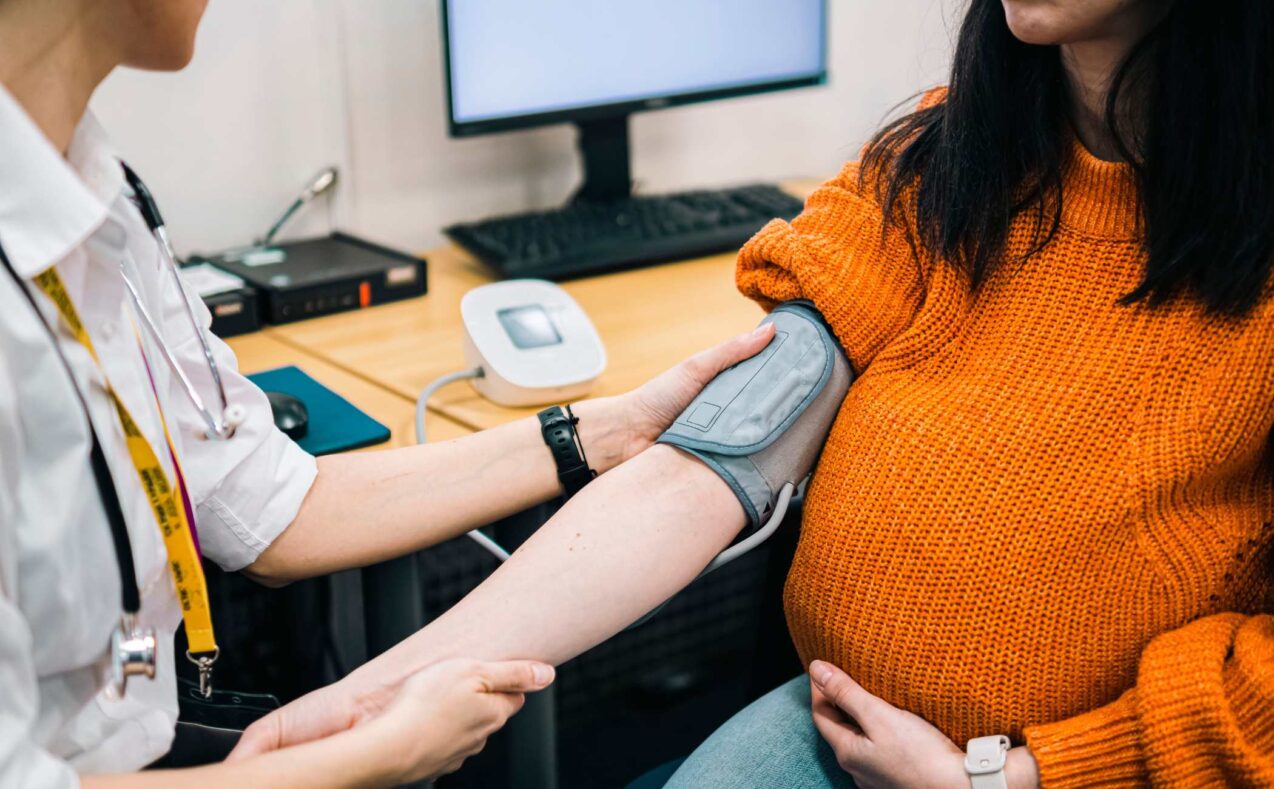A new study reveals women who maintain blood pressure within normal clinical ranges during pregnancy but do not experience the typical mid-pregnancy drop may face a higher risk of developing hypertension within five years after giving birth.
The research, published in the Journal of the American College of Cardiology: Advances, identifies a previously unrecognized group of women who could benefit from early intervention despite not being flagged by current medical guidelines.
Researchers from the Keck School of Medicine of University of Southern California collected comprehensive health data from 854 pregnant women and tracked them for up to five years postpartum. This longitudinal approach allowed scientists to identify specific blood pressure trajectories during pregnancy that correlate with increased hypertension risk years later.
The study found three distinct patterns of systolic blood pressure among pregnant women. The majority (80.2%) maintained consistently low blood pressure throughout pregnancy. A smaller group (7.4%) began with high blood pressure, which dropped during the second trimester before rising again. The third group (12.4%) showed slightly elevated but clinically normal blood pressure that did not drop during the second trimester.
Women in this third category faced a risk of developing hypertension 4.91 times higher than those with consistently low blood pressure. This increased risk approached the 5.44 times higher risk observed in women with traditionally recognized high-risk pregnancies.
"This group of women would not be identified as having higher long-term hypertension risk by any of the current clinical criteria, since their blood pressure remained below diagnostic thresholds and most did not have other traditional risk factors," Shohreh Farzan, associate professor of population and public health sciences at the Keck School of Medicine of USC and the study's senior author, said.
The research draws from the Maternal and Developmental Risks from Environmental and Social Stressors cohort, which includes 854 low-income Hispanic women and their children who have participated in research since 2015. Researchers periodically gathered information on demographics, lifestyle factors and various health indicators during pregnancy and at annual visits up to five years after birth.
Using statistical analysis, the researchers identified blood pressure patterns during pregnancy and examined whether these patterns correlated with health changes during follow-up visits. The findings suggest that tracking blood pressure patterns throughout pregnancy could help identify at-risk women who might otherwise go unnoticed.
Zhongzheng "Jason" Niu, the study's first author and a Presidential Sustainability Solutions Fellow at USC, emphasized the potential for prevention. "Because these women lacked traditional risk factors, they would not be alerted to their higher risk, nor would they be closely monitored for the development of high blood pressure," he said.
The research addresses a critical gap in women's health research. After presenting these findings at the American Heart Association EPI Lifestyle meeting in 2023, Niu received the organization's Trudy Bush Fellowship for Cardiovascular Disease Research in Women's Health.
"Women's health can change a lot between pregnancy and menopause, but it is a period we know very little about," Niu said. "Our study helps fill that gap in understanding when it comes to hypertension."
The findings come as the American Heart Association and the American College of Obstetricians and Gynecologists increase focus on women's cardiovascular health. The research is one of the first studies to analyze hypertension risk in the understudied period between pregnancy and menopause.
The researchers say relatively simple changes in clinical practice could help identify and treat this previously unrecognized high-risk group. Clinicians could track blood pressure throughout pregnancy and follow up with women who do not show the expected second-trimester decrease, even when their readings remain within normal ranges.
The American Heart Association – which updated its hypertension guidelines for the general population in 2017 – might consider adjusting its recommendations for blood pressure during pregnancy based on these findings.
Farzan and Niu note additional research is needed to confirm these results and learn more about women in both high-risk groups. The team is also investigating whether environmental exposures, including air pollution, heavy metals, and per- and polyfluoroalkyl substances (PFAS), might be linked to changes in blood pressure patterns during and after pregnancy.

 Trump has begun another trade war. Here's a timeline of how we got here
Trump has begun another trade war. Here's a timeline of how we got here
 Canada's leader laments lost friendship with US in town that sheltered stranded Americans after 9/11
Canada's leader laments lost friendship with US in town that sheltered stranded Americans after 9/11
 Chinese EV giant BYD's fourth-quarter profit leaps 73%
Chinese EV giant BYD's fourth-quarter profit leaps 73%
 You're an American in another land? Prepare to talk about the why and how of Trump 2.0
You're an American in another land? Prepare to talk about the why and how of Trump 2.0
 Chalk talk: Star power, top teams and No. 5 seeds headline the women's March Madness Sweet 16
Chalk talk: Star power, top teams and No. 5 seeds headline the women's March Madness Sweet 16
 Purdue returns to Sweet 16 with 76-62 win over McNeese in March Madness
Purdue returns to Sweet 16 with 76-62 win over McNeese in March Madness








